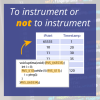There are lots of products on the market claiming to be real-time operating systems. Wikipedia alone lists 149. But what does it mean to be a real-time operating system?
What is a real-time operating system or RTOS?
An RTOS is an operating system which must execute tasks within specified time constraints. We call this the "worst-case response time", which is different from worst-case execution time (WCET). For more details see our blog on the difference between execution times and response times.
How do we find the worst-case response time?
It depends on the scheduling approach that the RTOS uses. For example, fixed priority pre-emptive scheduling as used by the Automotive RTOS standard AUTOSAR OS (described in the ISO Standard 17356), and its predecessor OSEK OS allows schedulability analysis techniques, for example Rate-Monotonic Analysis (RMA) or Deadline Monotonic Analysis (DMA), to be applied. Using for example the RMA approach, the worst-case response time for a task can be computed by applying the following values to a formula:
- Period of all tasks/interrupts (i.e. how often they are executed);
- Worst case execution time of all tasks/interrupts;
- Priority of all tasks/interrupts;
Refinements to the basic analysis have also been proposed. These also include such details as:
- Blocking time for all tasks/interrupts;
- Deadlines for any tasks.
Further details of the analysis can be found at www.embedded.com.
Finding the worst-case execution time of the tasks and interrupts isn’t enough, of course. It’s also important to demonstrate that your RTOS has an upper bound for the execution time of any of its operations (including context switches and interrupt handlers). Performing DMA on your tasks isn’t enough if your RTOS has edge cases that introduces significant time spent handling task switches (for example).
Ask your RTOS vendor for good timing data on RTOS operations. RapiTime can help to determine the WCET of your tasks. If you have access to the source code of the RTOS, RapiTime can help there too.

 Rapita System Announces New Distribution Partnership with COONTEC
Rapita System Announces New Distribution Partnership with COONTEC
 Rapita partners with Asterios Technologies to deliver solutions in multicore certification
Rapita partners with Asterios Technologies to deliver solutions in multicore certification
 SAIF Autonomy to use RVS to verify their groundbreaking AI platform
SAIF Autonomy to use RVS to verify their groundbreaking AI platform
 What does AMACC Rev B mean for multicore certification?
What does AMACC Rev B mean for multicore certification?
 How emulation can reduce avionics verification costs: Sim68020
How emulation can reduce avionics verification costs: Sim68020
 Multicore timing analysis: to instrument or not to instrument
Multicore timing analysis: to instrument or not to instrument
 How to certify multicore processors - what is everyone asking?
How to certify multicore processors - what is everyone asking?
 Certifying Unmanned Aircraft Systems
Certifying Unmanned Aircraft Systems
 DO-278A Guidance: Introduction to RTCA DO-278 approval
DO-278A Guidance: Introduction to RTCA DO-278 approval
 ISO 26262
ISO 26262
 Data Coupling & Control Coupling
Data Coupling & Control Coupling
 DASC 2025
DASC 2025
 DO-178C Multicore In-person Training (Fort Worth, TX)
DO-178C Multicore In-person Training (Fort Worth, TX)
 DO-178C Multicore In-person Training (Toulouse)
DO-178C Multicore In-person Training (Toulouse)
 HISC 2025
HISC 2025

















